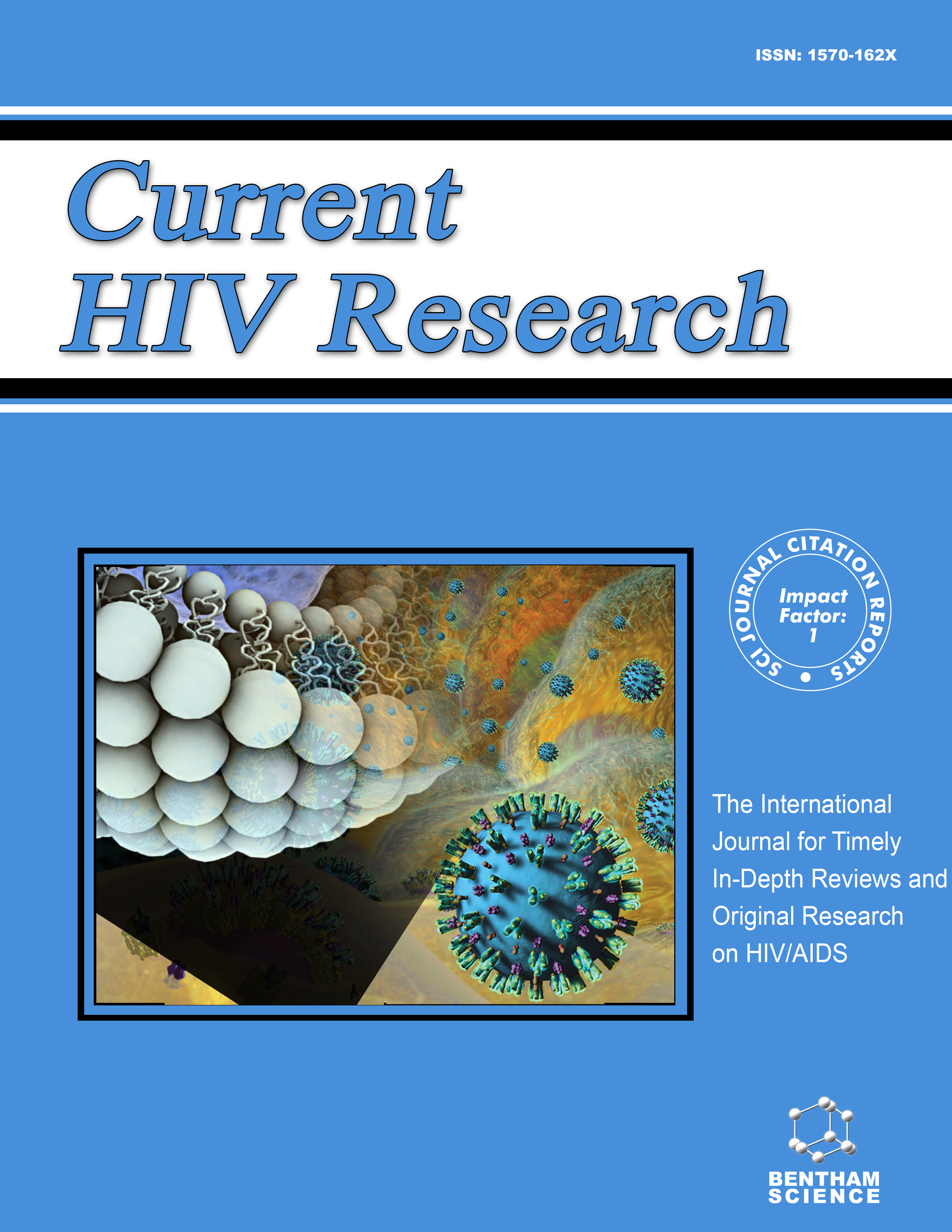- Home
- A-Z Publications
- Current HIV Research
- Previous Issues
- Volume 16, Issue 3, 2018
Current HIV Research - Volume 16, Issue 3, 2018
Volume 16, Issue 3, 2018
-
-
Host Restriction Factors and Human Immunodeficiency Virus (HIV-1): A Dynamic Interplay Involving All Phases of the Viral Life Cycle
More LessAuthors: Vanessa D`Urbano, Elisa De Crignis and Maria C. ReMammalian cells have evolved several mechanisms to prevent or block lentiviral infection and spread. Among the innate immune mechanisms, the signaling cascade triggered by type I interferon (IFN) plays a pivotal role in limiting the burden of HIV-1. In the presence of IFN, human cells upregulate the expression of a number of genes, referred to as IFN-stimulated genes (ISGs), many of them acting as antiviral restriction Read More
-
-
-
Microbial Translocation and Immune Activation in HIV-1 Infected Pregnant Women
More LessBackground: Immune Activation (IA) has been previously documented in both pregnant (PG) and non-PG HIV-1 infected (HIV+) women as well as in HIV- uninfected PG women; the latter as a result of the fetal allograft. To determine whether the combined effects of HIV and pregnancy result in increased IA and whether IA is associated with Microbial Translocation (MT), we performed a prospective, longitudinal, controlled study d Read More
-
-
-
Assessment of Transmitted HIV-1 Drug Resistance Mutations Using Ultra- Deep Pyrosequencing in a Turkish Cohort
More LessAuthors: Uluhan Sili, Burak Aksu, Aysun Tekin, Ufuk Hasdemir, Guner Soyletir and Volkan KortenBackground: Antiretroviral treatment (ART) reduces morbidity and mortality caused by human immunodeficiency virus (HIV) infection; however, the emergence of drug-resistant strains poses an important obstacle to treatment success. Using conventional sequencing methods to determine antiretroviral resistance, mutations present in ≥20% of quasispecies can be identified, but drug-resistant minority variants can lead to vi Read More
-
-
-
Comparison of Demographic, Epidemiological, Immunological, and Clinical Characteristics of Patients with HIV Mono-infection Versus Patients Co-infected with HCV or/and HBV: A Serbian Cohort Study
More LessAuthors: J. Ranin, D. Salemovic, B. Brmbolic, J. Marinkovic, I. Boricic, Pavlovic I. Pesic, S. Zerjav, M. Stanojevic and D. JevtovicObjective: The study aimed to correlate the status of hepatitis C (HCV) and hepatitis B virus (HBV) co-infection in patients with human immunodeficiency virus (HIV) infection with clinical and demographic data prior to starting highly active antiretroviral therapy (HAART) and assess the impact of HCV and HBV co-infection on the natural history of HIV infection. Patients and Methods: The study involved a total of 836 t Read More
-
-
-
Therapeutic Outcomes in AIDS-Associated Kaposi's Sarcoma Patients on Antiretroviral Therapy Treated with Chemotherapy at Two Tertiary Hospitals in Lusaka, Zambia
More LessThe incidence of HIV-associated Kaposi’s sarcoma (KS) remains high in Zambia in the antiretroviral therapy era. The most efficacious treatment regimen for KS has yet to be established. In both developed and developing countries, treatment regimens have had limited efficacy. Late presentation in Africa affects therapeutic outcomes. Objective: The aim of this study was to determine therapeutic outcomes of epidemi Read More
-
-
-
Structural Barriers to Pre-exposure Prophylaxis Use Among Young Sexual Minority Men: The P18 Cohort Study
More LessBackground: Despite decreasing rates of HIV among many populations, HIV-related health disparities among gay, bisexual and other men who have sex with men persist, with disproportional percentages of new HIV diagnoses among racial and ethnic minority men. Despite increasing awareness of HIV pre-exposure prophylaxis (PrEP), PrEP use remains low. In addition to exploring individual-level factors for this slow uptake, struct Read More
-
-
-
PrEP Eligibility and Interest Among Clinic- and Community-Recruited Young Black Women in Atlanta, Georgia, USA
More LessAuthors: J.M. Sales, R.J. Steiner, J.L. Brown, A. Swartzendruber, A.S. Patel and A.N. ShethBackground: Atlanta has been identified as an HIV “hot spot” for Black women and ranks 5th in the US with new infections. Yet little is known about PrEP eligibility or interest among young Black women in Atlanta. Methods: A convenience sample of 1,261 Black women (ages 14-24 years) were recruited from two settings: community venues and sexual health clinics. They provided self-reported sexual behavior data and specime Read More
-
Volumes & issues
-
Volume 23 (2025)
-
Volume 22 (2024)
-
Volume 21 (2023)
-
Volume 20 (2022)
-
Volume 19 (2021)
-
Volume 18 (2020)
-
Volume 17 (2019)
-
Volume 16 (2018)
-
Volume 15 (2017)
-
Volume 14 (2016)
-
Volume 13 (2015)
-
Volume 12 (2014)
-
Volume 11 (2013)
-
Volume 10 (2012)
-
Volume 9 (2011)
-
Volume 8 (2010)
-
Volume 7 (2009)
-
Volume 6 (2008)
-
Volume 5 (2007)
-
Volume 4 (2006)
-
Volume 3 (2005)
-
Volume 2 (2004)
-
Volume 1 (2003)
Most Read This Month
Article
content/journals/chr
Journal
10
5
false
en


